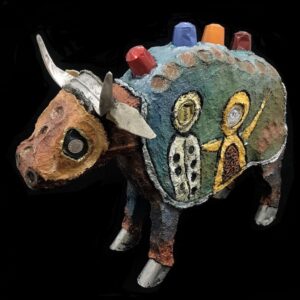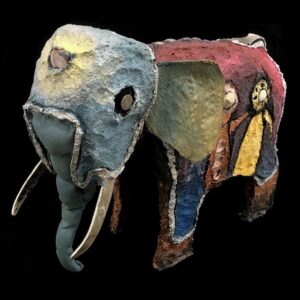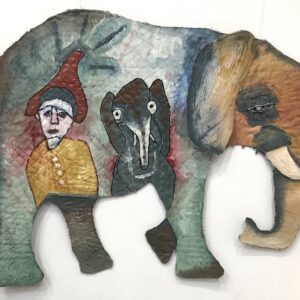Hugo Tovar
Contemporary art from Mexico
Catalogue:
Showing all 3 resultsSorted by latest
About Hugo Tovar
Born in Tláhuac, Mexico City in 1967. Curious and self-taught by nature at the age of four, and before even attending school he learns to read and thanks to this he comes into contact with various artistic expressions through books, and develops a taste for literature at a very early age, likewise from a very young age he leans towards the plastic arts at the hands of a very close and dear uncle (Fernando Cuauhtémoc, uncle Temo) who introduces him and fosters a taste for literature and music, he is also the one who puts the first watercolors and his first painting equipment in his hands. It is then that at the age of ten, testimonies of his painting can already be found.
Already in adolescence he began to work in different and very varied activities that allow him to come into contact with various industrial and construction materials, which he will later use in his plastic work. This is where your fascination for recyclable materials begins and the desire to experiment.
For this reason, very young at the age of sixteen, motivated by an adventurous spirit and a thirst for knowledge, he left home to visit various states of the Mexican Republic. Thus, as in 1989, he arrived in the state of Oaxaca, where he came into contact with various young people who at that time were also budding artists and who ultimately would be the current breed of creators who consolidated a great artistic movement in Oaxaca that had begun. Rufino Tamayo, Rodolfo Nieto and Francisco Toledo among other great teachers.
It is in those years of the early nineties that he arrives at the Rufino Tamayo Plastic Arts Workshop in that city of Oaxaca and begins to work painting, drawing, engraving and sculpture with more seriousness and awareness.
It is at this stage of his life that with the help of the Rufino Tamayo Plastic Arts Workshop and sponsored by Master Juan Alcázar, he participates in a project to bring artistic education and training of the public and artists to different communities in Oaxaca, teaching drawing classes, painting and sculpture in rural communities. Working with peasant children and youth in Oaxacan communities allows her to fully experience the wealth and genuine cultural heritage of the native peoples. But this experience also makes him suffer the extreme conditions of marginalization, poverty and social backwardness in which the communities find themselves far from the official folkloric discourse and the “economic spillover” benefits generated by the tourism business created precisely around an ethnic discourse.
These experiences, far from discouraging him, inspire and motivate him to try to incorporate the imagery and cosmogony of native peoples into his work, mixing it with myths and urban elements of the big cities. Hence, strange animals (Animalejos) begin to appear in his work, mixed with fantastic beings from popular imagery (Nahuales) also fused with humanoid beings.







